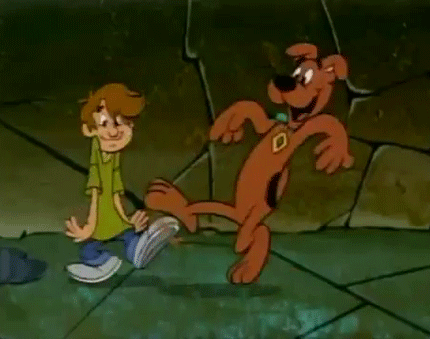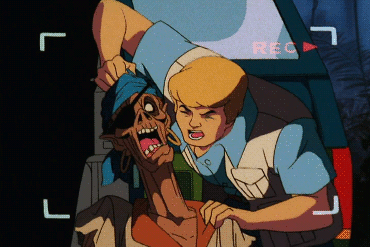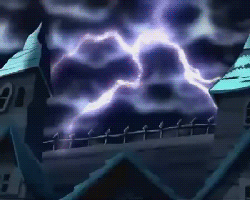Scooby-Doo, Where Are You!
In the late 60's the cartoon makers at Hanna-Barbera wanted to get away from violent superheroes to appease concerned parents so they moved towards gothic horror. They created Scooby-Doo, Where Are You! as a home for safe adventures with running and traps instead of face punches. Before long several elements of the show entered the zeitgeist like the traditional unmasking of the villain followed by the phrase "I would have gotten away with if it weren't for you meddling kids." Also, the characters became cultural touchstones; Fred the leader, Daphne the pretty one, Velma the nerd, Shaggy the slacker, and Scooby the talking dog, a must-have for any friend group.
The New Scooby-Doo Movies
The follow up to Where Are You! had the same structure but with one important addition. When the Mystery Machine broke down the gang found a celebrity to help them solve the mystery. Among the famous faces were The Three Stooges, Phyllis Diller and Mama Cass. Ironically, Batman and Robin proved a natural fit and appeared in two different episodes of The New Scooby-Doo Movies. The team-up had enough impact that it was revisited as recently as a 2011 episode of Batman: The Brave and the Bold and in 2014 the Dynamic Duo kicked off the comic book series Scooby-Doo Team Up. Celebrity cameos became an intrinsic element of the franchise with appearances by John Cena, KISS, Harlan Ellison and Ruben Studdard.
A Pup Named Scooby-Doo
In 1988 the version of Scooby-Doo that is the farthest from the rest arrived. As the title implies, A Pup Named Scooby-Doo follows the adventures of a much younger, more cartoonish Mystery Inc. Instead of roaming the country the team solved mysteries in their own backyard in the town of Coolsville while defying physics in a zany Loony Tunes style. In four seasons the show made some memorable additions to the Scooby mythos that are rarely referenced afterwards, for instance, Fred's nemesis Red Herring, who gets blamed for every crime but is never guilty.
Zombie Island
After A Pup Named Scooby-Doo the team laid low for a while. In 1998 the series was revitalized by the direct-to-video Scooby-Doo on Zombie Island. Contrary to popular belief, Zombie Island is not the first Scooby-Doo story with monsters that are real, but it is the first to feature monsters that are a real threat. Along with zombies, the island was inhabited by supernatural spirits, face melting voo-doo, and soul-sucking werecats, none of which were the result of masks and at least one of which was thoroughly malicious. The following two movies, The Witch's Ghost and The Alien Invaders had a similar tone and supernatural facet, and Witch's Ghost introduced the beloved Wiccan goth rock band The Hex Girls.
What's New, Scooby-Doo?
In 2002 Scooby appeared in his first TV show since A Pup Named Scooby-Doo. What's New Scooby-Doo? is for the most part a straightforward early-2000's adaptation of Where are You? The gang drives around in a van pulling off masks and having a talking dog. It was an attempt to get back to basics and a fairly successful one at that. The biggest difference between 1969 and 2002 is one has more pop punk. So much pop punk. If nothing else, What's New can be remembered for having Scooby-Doo's best theme song, as performed by Simple Plan who also appeared as themselves in one episode. There was also a fair bit of classic punk. Whether they realize it or not, What's New, Scooby-Doo? was the first place a lot of millennials ever encountered The Ramones.
The Movie
The same year What's New, Scooby-Doo? premiered Mystery Incorporated made its first major motion picture appearance, with a CGI Scooby and the rest of the gang in live-action. Although Scooby-Doo is famous for its formula, it's worth noting that a big component of that formula is strangeness and that's what makes the live-action Scooby-Doo so entertaining. It's pretty bonkers. The monsters are real again and they're stealing teenagers' souls and inhabiting their bodies. They are led by Scrappy-Doo, Scooby's spunky nephew who was added to the franchise in 1979 as a desperate attempt to boost ratings and swept under the rug in the late 80's. Instead of a mask, Scrappy's disguise is a robot Rowan Atkinson, just one example of the excellent casting for the movie. Fred and Daphne were played by early 00's power couple Freddie Prinze Jr. and Sarah Michelle Geller. Linda Cardellini made the move from freak to geek to play Velma and Matthew Lillard played Shaggy. He was so right for the part that he's been voicing the animated version since 2010, which brings us to...
Mystery Incorporated
The last Scooby-Doo TV series before Be Cool is, with little question, the best version of Scooby-Doo possible. Instead of just solving a different mystery each week Mystery Inc. reimagines Coolsville as a Twin Peaks-like town full of conspiracy and mysticism. The very concept parodies the Scooby formula, serial mysteries, and gritty reboots, but like any good parody Mystery Inc. is also a fantastic version of the things it mocks. On top of all that, it is also the most stylized version of Scooby with a visual palate reminiscent of Guillermo del Toro. It's a smart, funny, children's cartoon with a dense mythology and beautiful animation. I can understand a need for constant reinvention but two seasons of Mystery Inc. doesn't seem like quite enough.




No comments:
Post a Comment